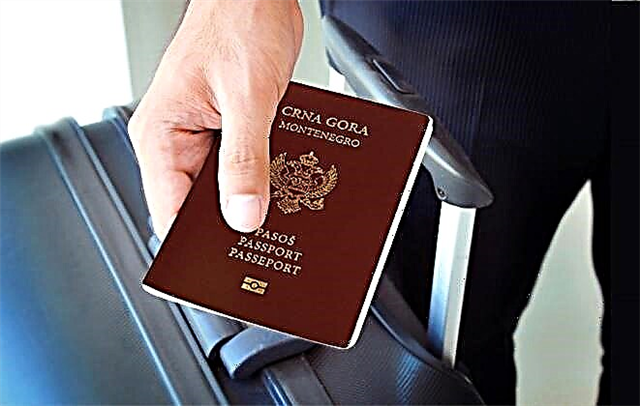Estonia introduced the euro on its territory back in 2021. Prior to that, the local krona was its only currency. As in any country, Estonia has its own Central Bank. He is engaged in ensuring the stability of the country's financial system, in particular, issues of issuing cash into circulation. The central bank controls both state and private banks in Estonia.

How the Estonian banking system works
The banking system of Estonia is two-tier, consisting of the Central Bank and institutions registered in the country and foreign branches.
Let's take a closer look at the components.
- The upper level is represented by the Bank of Estonia (Eesti Pank). Since 2021, he has become a member of the European System of Central Banks. Therefore, if earlier Bank of Estonia (this is how the Central Bank of Estonia is called in English) was responsible for the stability of the national currency, now it is taking part in the implementation of the single monetary policy of the euro area.
- At the second level, the banking system of the Republic of Estonia is represented by financial institutions registered in the country:
- Tallinna Äripanga AS,
- Marfin Bank Estonia,
- Bigbank AS,
- AS LHV Pank;
- Luminor Eestis;
- AS Eesti Krediidipank;
- AS LHV Pank.
In addition, the Estonian banking system at the second level includes 11 branches of foreign financial institutions, the largest of which are Swedbank AS and AS SEB Pank (both headquartered in Sweden), as well as the Latvian Citadele banka.
How to open a bank account in the Republic of Estonia
Of the advantages of opening a bank account in this Baltic country, it is worth highlighting:
- the cost of service is lower compared to neighboring states;

- the possibility of making a cheap (from 0.38 euros) and fast (within 2 days) money transfer in Europe;
- clients of most banks are provided with access to services in 3 languages: Estonian, English and Russian;
- personalized internet banking system is perfectly protected from hacking and encroachments.
To open an account with an Estonian bank, a non-resident will need to prove a close relationship with Estonia. Facts such as the residence of relatives, the presence of their own real estate in the country, doing business, studying at one of the universities, etc. are taken into consideration.
Find out about education in Estonia: features, stages, cost.
In some financial institutions, it can take up to 10 business days to make a decision on an application.
In most cases, opening a bank account for a non-resident is carried out on a paid basis - at least 22 euros. But the cost of this procedure can be much higher. For example, in the price list, which contains the official website of Swedbank, 200 euros are indicated.
As for the cost of service, it may be higher for foreigners than for Estonian citizens. However, there are also options when the fee is charged only for certain transactions.
Opening an account in an Estonian bank involves the following steps:
- Filling out an application form.
- Submission of the required documents.
- If the financial institution makes a positive decision to open an account, conclude a cooperation agreement.
- Obtaining a plastic bank card and PIN-code.
- Actually opening an account.
Not only a citizen of Estonia, but also a foreigner with e-resident status can open an account in Estonia online.
To obtain this status, a resident of another state must provide the Estonian border guard service and the police with his biometric data, and then go through the identification procedure. As a result, he will receive an analogue of the Estonian ID-card with an electronic chip.
The article “Eesti kodakondsus: how to obtain Estonian citizenship” will help you to understand what an electronic citizenship of Estonia is, how to apply for an E-residence.
Thanks to this document, the electronic signature supplied by a foreigner is recognized by all banks in the country.
A package of required documents
To open a bank account in Estonia, an individual must provide:
- international passport;
- proof of address (a rental agreement is suitable);
- a document confirming the existence of ties with the Republic of Estonia.
 To open an account remotely, a potential client submits to a company specializing in the provision of such services, a notarized power of attorney for:
To open an account remotely, a potential client submits to a company specializing in the provision of such services, a notarized power of attorney for:
- opening an account with a financial institution;
- signing an agreement with a monetary organization;
- obtaining a bank plastic payment document and PIN-code.
It is also necessary to provide a notarized copy of the first page of the foreign passport.
Take a sociological survey!
What fees do banks charge
According to EU directive 2014/92 / EU, financial services organizations are required to provide their clients with comprehensive information about the fees charged to them. This norm was enshrined in Estonian legislation in 2021.
Thus, local banks are obliged to send at least once a year to the citizens cooperating with them a statement in a standard form, in which all fees and payments accrued to each of them are indicated.
As for the figures contained in the above directive, the most notable change was the limitation of fees when making interbank payments:
- for a credit card, the commission should not exceed 0.3% of the transaction volume;
- bank commission for a debit card - no more than 2% of the same indicator.
You should be aware that, as in other countries, banks in the Republic of Estonia use tariff packages that include a certain set of services and provide for a monthly fee. In addition, if the service is one-time, a certain amount of commission is charged at a time.
So, for example, when an investment loan is issued at Swedbank, the client pays out:
- management fee - from 142 €;
- for real estate appraisal - from 30 to 1,000 €;
- commission for paperwork - 142 €.
The information about the amount of the commission fee for withdrawing cash from the Maestro card of Citadele bank through ATMs of other financial institutions abroad and in Estonia looks interesting. The first 3 such transactions per month are free of charge, and starting from the 4th, a minimum of 1 euro or 1% of the amount is charged.
Let's give one more example. AS SEB Pank's client pays a commission:
- when making a mortgage agreement - 150 €;
- for servicing a credit account - 0.3 € / month.
Other Estonian monetary institutions levy fees of the same order for similar services.
Which bank to choose
Most Russians, in search of an answer to the question of which monetary institution to choose for cooperation, study the rating of Estonian banks. And here everything looks unambiguous: the undisputed leaders of the financial market are:
- Swedbank AS - about 50 branches, half of which are open in Tallinn;
- SEB Pank AS - out of more than 20 branches in the capital of Estonia, 7 operate.
These banks account for 90% of the Estonian banking sector.
In addition, one should take into account the facts of awarding prizes and awards to banks in various nominations. So, for example, Swedbank AS:
- in 2021 was awarded the title of "Best Mobile Bank in Estonia";
- for several years in a row it was recognized as the most competitive company in the financial sector.
And in April 2021, the authoritative magazine Global Finance named SEB Pank AS the best bank in Estonia.
Although Estonian banks are committed to innovative technologies, they have not yet opened accounts for cryptocurrency firms. The only Estonian bank that is considering the possibility of cooperation with such companies is AS LHV Pank.
 Luminor Eestis was included in the top 150 of the world ranking in 2021.But his non-resident clients with an electronic residence permit may have problems in 2021. If they cannot explain the flow of money and the origin of the transfers, they will be assigned the status of "suspicious clients" and the account of each of them will be closed.
Luminor Eestis was included in the top 150 of the world ranking in 2021.But his non-resident clients with an electronic residence permit may have problems in 2021. If they cannot explain the flow of money and the origin of the transfers, they will be assigned the status of "suspicious clients" and the account of each of them will be closed.
Nordea Eesti Bank is one of the most reliable Estonian financial institutions. In support of this thesis, suffice it to say that it is a part of the largest financial concern of the Nordic countries, Nordea Bank AB, and currently serves about 180 thousand clients.
AS Eesti Krediidipank is characterized by a conservative management style and its activity is based on a balanced approach to risk assessment.
But Danske Bank operating in the territory of the Republic of Estonia is going through difficult times. Since back in 2021, an audit by the Estonian Financial Supervision Authority established that the institution did not track the origin of money passing through it, today all foreigners' accounts in the Estonian branch of Danske Bank are closed.
In general, all monetary institutions in Estonia offer individuals and legal entities a wide range of services, both international and national. Therefore, the choice of a suitable bank is also largely determined by subjective factors.
How to make a transfer
The most obvious method of organizing a monetary transaction is the transfer of non-cash funds through a bank. The table provides information on the cost of a standard transfer in the most popular financial institutions, when the costs are covered by the payer.
| Bank | Transfer at the branch, euro | Online translation, euro |
|---|---|---|
| SEB Pank AS | 30 | 26 |
| Swedbank AS | 29.75 | 24.75 |
| Nordea Eesti | 30.50 | 24 |
| Krediidipank | 30 | not available |
You can also use payment systems. Let's consider the most popular ones.
- Western Union. The following tariffs apply in Estonia:
- transfer of an amount from 100 to 5000 rubles. will cost 100 rubles; from 3 to 200 dollars - 3 $;
- over 5,000 rubles or 200 dollars - 1% of the amount.
You can transfer funds in cash through an agent or from a card. One of the representatives of the Western Union system in Estonia is the Omniva company.
- Contact system. The commission for transferring to Tallinn from Moscow is 1.5% of the amount. You will have to pay 3% for a transfer to Moscow from Tallinn.

- TransferWise system. Commission size:
- with a transfer amount of up to 217 euros - 3.25 €;
- for a transaction over 217 euros - 0.5% of its value.
The maximum can be transferred at a time no more than 10,000 euros / dollars.
- Postal transfer. This service is only offered by Omniva. Transfer by mail does not require the recipient and sender to have bank accounts. You can transfer no more than 1,000 euros at a time. The amount of the commission fee depends on the size of the transfer:
- less than 35 euros - commission 3 €;
- over 35 euros - 7% of the transfer amount is added to 3 euros.
As you can see, the choice of money transfer methods is quite wide.
Conclusion
In the banking sector, the Republic of Estonia can be an example for other states in transition. Moreover, each monetary organization operating on the territory of this country has its own characteristics. The largest banking institutions providing financial services to individuals and legal entities in Estonia are the Swedish banks Swedbank AS and AS SEB Pank.













